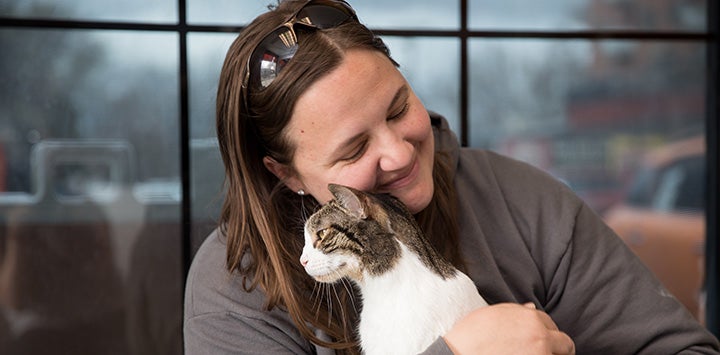
Return to Home (Owner) Training Playbook
Introduction
This playbook is designed to provide an overview of Return to Home (Owner) (RTH/RTO) programs and help you implement an aggressive RTH program at your agency. This lifesaving program is instrumental to any agency that receives stray animals, since a primary goal of every shelter should be to reduce the number of animals housed at the facility. By making every effort to identify and notify owners and make the process of reunification easy, agencies can ensure that their limited resources are spent where they are needed most.
Program Overview
RTH programs are designed to reunite owners with their lost pets as quickly as possible. Nationally, less then 3% of stray cats and 22% of stray dogs without microchips* entering the shelter system are reunited with their families. By working diligently on identifying owners of these pets, shelters can decrease the time that stray animals spend in their care. RTH strategies also play a vital role in reducing the number of animals in the shelter, decrease the likelihood of disease outbreaks and give shelters the opportunity to focus more resources on the animals who are already in the facility.
An ideal program starts in the field with the animal control staff. All field staff should be equipped with microchip scanners so that officers can return the animals to their owners without ever having to impound them in the shelter. Check out our playbook on Field Return to Home (Owner).
Program Composition
The following describes workforce needs, internal and/or external resources, and any other additional steps that should be taken into consideration for successful program implementation:
- The first step is to ensure that you have a process in place to receive lost-and-found reports. This should be a process that includes taking in electronic lost/found flyers from the public and offering tips on how pet owners can conduct an effective search for their lost pet.
- Ensure that the hours allowed for reclaim are conducive to people’s work schedules. Many people are unable to take off work to reclaim their pets. A general rule of thumb is that if staff are working in the building, then residents should be able to reclaim their animal. The goal is always to get the animals out as soon as possible.
- Ensure that reclaim fees are reasonable and allow staff conducting the return to waive the fee (if necessary) without supervisor approval.
- Identify a key staff member or volunteer who will take the lead on overseeing the implementation and continuation of the RTH program.
- Develop your standard operating procedures for RTH, including essential components such as these:
- Require that all animals be scanned for a microchip several times during their stay at the shelter, such as when the animal is moved to the next stage (e.g., at intake, when taken off stray hold and put into the adoption program, then prior to adoption). It is not uncommon for a chip to be missed when scanning; agencies must be conscious of this and scan animals repeatedly.
- Determine what to do when a chip is located, including situations when the owner’s contact information has not been updated. For instance, check utility records in the jurisdiction, track back to the manufacturer and identify where the chip was sold and follow the sale as far as possible.
- Determine how impounded animals will be matched to lost-pet reports.
- Determine how lost-pet reports will be matched to found-pet reports called in by residents. Attempts to match lost-pet reports to stray animals should go beyond initial intake.
- Determine the hours during which reclaim can occur.
- Determine the requirements for waiving or reducing reclaim fees.
- Identify social media pages in your area and the surrounding areas on which lost/found pets are posted (e.g., Nextdoor.com). Another option is to create your own.
- Post your policies online and make clear what requirements are necessary for reclaim.
- Set up a special email address to receive lost/found reports from the public (example: lostpets@shelteremailaddress).
Sample Procedure and Program Information Documents
Now that you have a general understanding of return-to-owner programs, the following documents may act as templates as you try to implement or scale up this program at your own organization. Keep in mind that there is no exact or perfect form of implementation. Using the considerations and program composition notes above, you should use the following only as guidelines or building blocks when creating your own standard operating procedures or documents (both internal and public).
If you need further assistance or clarification, please reach out to your regional strategist, regional director, or the Best Friends national shelter support team at team2025@bestfriends.org.
- Become a shelter partner at Petco’s Lovelost
- Tips to help owners find pets themselves
- Humane Animal Control manual, chapter on RTH
- Sample SOP and guidelines for creating an SOP
*Lord LK, Ingwersen W, Gray JL, Wintz DJ. Characterization of Animals with Microchips Entering Animal Shelters. JAVMA, 2009, 235(2):160-167.
Updated August 2024
If you found this playbook helpful, check out our full catalog of handbooks, manuals, and playbooks.